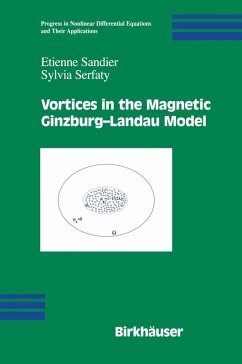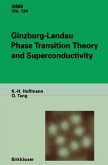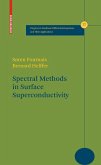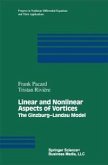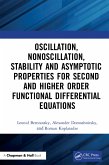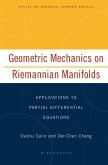With the discovery of type-II superconductivity by Abrikosov, the prediction of vortex lattices, and their experimental observation, quantized vortices have become a central object of study in superconductivity, superfluidity, and Bose--Einstein condensation. This book presents the mathematics of superconducting vortices in the framework of the acclaimed two-dimensional Ginzburg-Landau model, with or without magnetic field, and in the limit of a large Ginzburg-Landau parameter, kappa.
This text presents complete and mathematically rigorous versions of both results either already known by physicists or applied mathematicians, or entirely new. It begins by introducing mathematical tools such as the vortex balls construction and Jacobian estimates. Among the applications presented are: the determination of the vortex densities and vortex locations for energy minimizers in a wide range of regimes of applied fields, the precise expansion of the so-called first critical field in abounded domain, the existence of branches of solutions with given numbers of vortices, and the derivation of a criticality condition for vortex densities of non-minimizing solutions. Thus, this book retraces in an almost entirely self-contained way many results that are scattered in series of articles, while containing a number of previously unpublished results as well.
The book also provides a list of open problems and a guide to the increasingly diverse mathematical literature on Ginzburg--Landau related topics. It will benefit both pure and applied mathematicians, physicists, and graduate students having either an introductory or an advanced knowledge of the subject.
This text presents complete and mathematically rigorous versions of both results either already known by physicists or applied mathematicians, or entirely new. It begins by introducing mathematical tools such as the vortex balls construction and Jacobian estimates. Among the applications presented are: the determination of the vortex densities and vortex locations for energy minimizers in a wide range of regimes of applied fields, the precise expansion of the so-called first critical field in abounded domain, the existence of branches of solutions with given numbers of vortices, and the derivation of a criticality condition for vortex densities of non-minimizing solutions. Thus, this book retraces in an almost entirely self-contained way many results that are scattered in series of articles, while containing a number of previously unpublished results as well.
The book also provides a list of open problems and a guide to the increasingly diverse mathematical literature on Ginzburg--Landau related topics. It will benefit both pure and applied mathematicians, physicists, and graduate students having either an introductory or an advanced knowledge of the subject.
Dieser Download kann aus rechtlichen Gründen nur mit Rechnungsadresse in A, B, BG, CY, CZ, D, DK, EW, E, FIN, F, GR, HR, H, IRL, I, LT, L, LR, M, NL, PL, P, R, S, SLO, SK ausgeliefert werden.
"This book deals with the mathematical study of the two-dimensional Ginzburg-Landau model with magnetic field. This important model was introduced by Ginzburg and Landau in the 1950s as a phenomenological model to describe superconductivity consisting in the complete loss of resistivity of certain metals and alloys at very low temperatures...All parts of this interesting book are clearly and rigorously written. A consistent bibliography is given and several open problems are detailed. This work has to be recommended."
-Zentralblatt MATH
"In conclusion, this book is an excellent, up-to-the-minute presentation of the current state of the mathematics of vortices in Ginzburg-Landau models. It also represents a tour de force of mathematical analysis, revealing a fascinating and intricate picture of a physical model which may have been unexpected based on heuristic considerations. I strongly recommend this book to researchers who are interested in vortices (andother quantized singularities) as these methods will continue to be instrumental in forthcoming research in the field. One could also find interesting material to supplement a graduate coursc in variational methods or PDEs."
-SIAM Review
-Zentralblatt MATH
"In conclusion, this book is an excellent, up-to-the-minute presentation of the current state of the mathematics of vortices in Ginzburg-Landau models. It also represents a tour de force of mathematical analysis, revealing a fascinating and intricate picture of a physical model which may have been unexpected based on heuristic considerations. I strongly recommend this book to researchers who are interested in vortices (andother quantized singularities) as these methods will continue to be instrumental in forthcoming research in the field. One could also find interesting material to supplement a graduate coursc in variational methods or PDEs."
-SIAM Review

